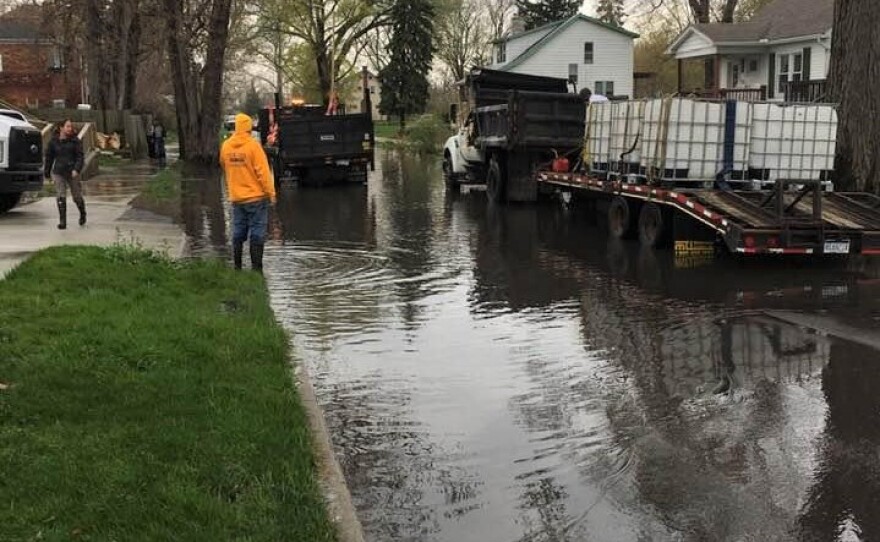Detroit’s historic Jefferson-Chalmers neighborhood faces a persistent flooding threat until early summer—and the city is calling for volunteer help in an effort to save people’s homes.
Jefferson-Chalmers is on the city’s far northeast side. Canals cut through parts of the neighborhood before linking up with the Detroit River, near where that river merges with Lake St. Clair.
Some parts of the neighborhood have experienced flooding for several days now, and experts with the U.S. Army Corps of Engineers say that situation will likely continue until June. The flood threat is largely driven by near-record high water levels in the Great Lakes system pushing up water levels in the canals. The situation is exacerbated by wind conditions, and recent heavy rains haven’t helped either.
Update, May 3, 2019, 10:32 a.m.:
The City of Detroit is no longer seeking volunteers to help with filling sandbags and building barrier walls. According to a release, more than 320 volunteers signed up to help the east-side neighborhood. Mayor Mike Duggan shared his appreciation for the "tremendous response." Residents of the impacted neighborhood are still encouraged to request assistance on the city's website.
Original Post, May 1, 2019, 5:29 p.m.:
Allison Key owns three properties that back up to one of the canals. She came to pick up more sandbags at a local park on Wednesday, watching as city workers shoveled piles of sand into plastic bags.
“The water’s just rising to the point where it’s flowing into the yard, and then into the street,” Key said. “So I spent the last since Monday building a sandbag wall.”
“My next door neighbor just built a big wall behind his property. So we kind of have our area handled. But with the rain last night and the water level rising even more, it was pretty crazy this morning. I was kind of trapped, it was kind of like an island. I couldn’t go in either direction on the street.”
The city of Detroit has launched an effort to help Jefferson-Chalmers homeowners with that. But Detroit Mayor Mike Duggan says the city is also looking for volunteers to help shore up the sandbag barriers throughout the neighborhood.
“At this point, we’re going to have to put tens of thousands of bags of sand down in the next three or four days to protect this neighborhood over the next eight weeks,” Duggan said.
Duggan said the city will start getting aggressive about code enforcement when it comes to seawalls, too. He says a number of the homes adjacent to canals have not built or maintained proper seawalls, putting their neighbors at risk of flooding even if they do have seawalls.
Allison Key is in the midst of building a seawall for two of her properties. She said it’s an expensive proposition that’s out of reach for some.
“I know a lot of people, they don’t have the kind of money it takes to fix their sea wall,” Key said. “So I feel like something has be done by the city or the Army Corps or something.”
Michelle Watts also lives on a canal. With the help of neighbors, she was busy sandbagging to supplement her seawall on Wednesday.
Some longtime neighborhood residents remember serious flooding from the 1970s and 80s, but incidents seem to be on the rise in recent years. Watts recalls flooding in 2011 and 2014. She praised the city’s efforts at mitigation this time around, and says despite the continued flood threat she has no desire to trade in her waterfront house.
“Do you move because of that? No! You hang in, you pull together, you work together and you make it happen,” Watts said. “That’s what neighbors are about. That’s what this community is about.”
Volunteers can sign up for two-hour shifts now through Sunday here. Residents who need help can let the city know by clicking on the I Need Help button.









